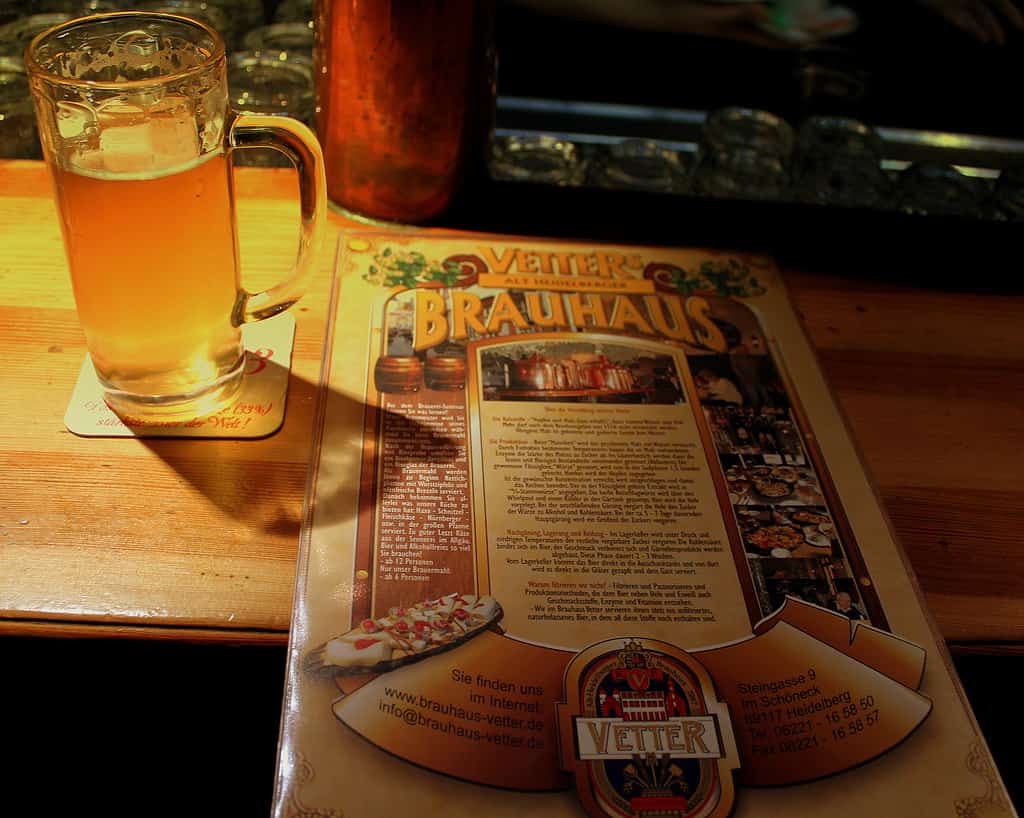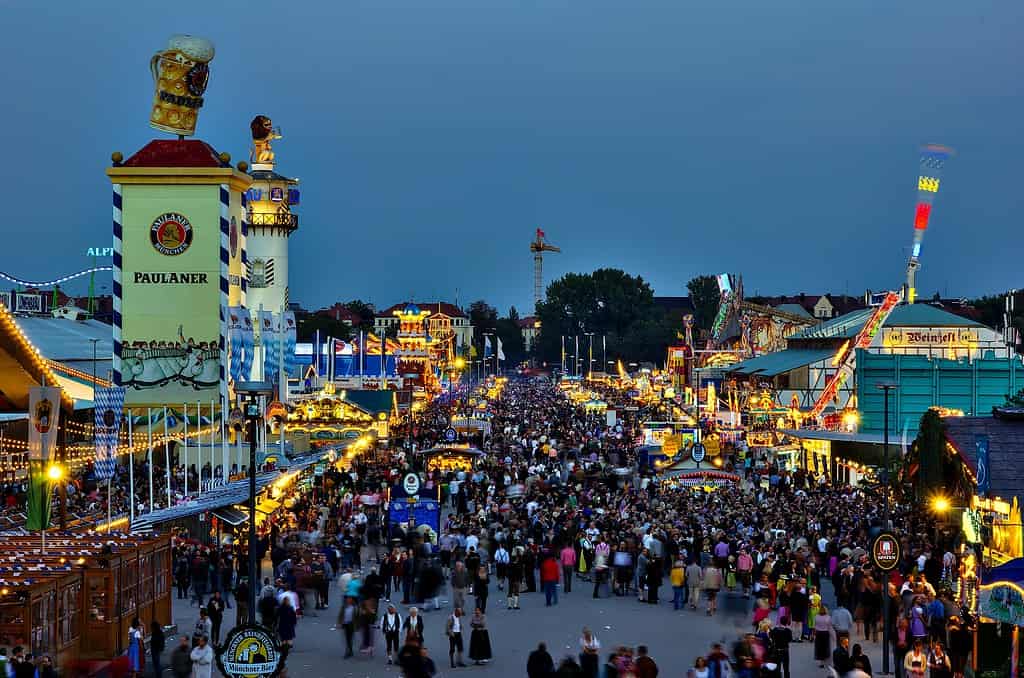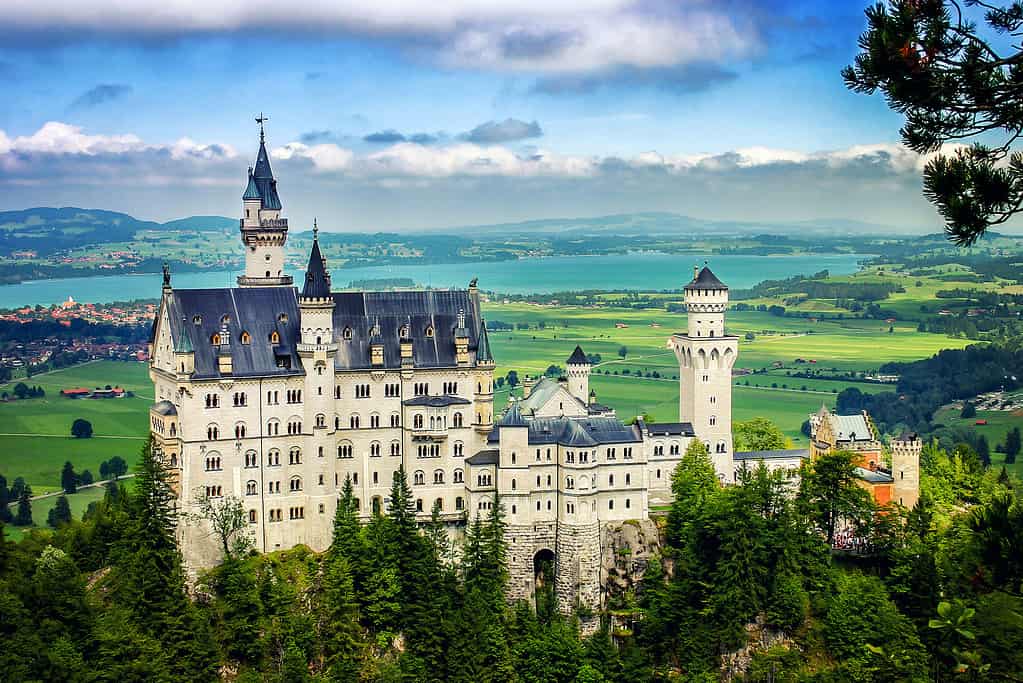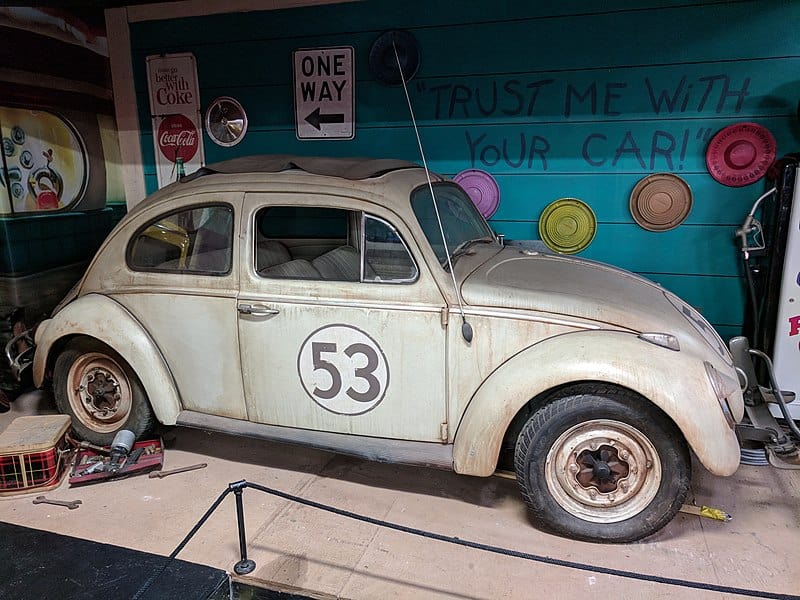Germany has a long history of creating amazing art, beer, food, dogs, and festivals. It’s just one of those fantastic places where it would be tough to find yourself bored. In Bavaria, there are medieval villages, breathtaking sky-blue lakes, and one-of-a-kind forests. In Berlin, you can find some of the coolest places around, including music venues, hipster markets, restaurants, and many museums. On top of all the unique and mega-tasty finds, the people are very kind, welcoming, and direct, unlike Americans. It’s an entirely different world! Let’s find out what Germany is known for and what Germans love about themselves.
1. German Vehicles
Remember Herbie, the little Volkswagon with the big heart and attitude? Herbie, like all Volkswagons, is from Germany. One thing is for sure: Germans know how to build amazing machinery. They also build phenomenal and highly sought-after coffee roasters like the GOTHOT and Probat. It roasts the inside of the coffee tree’s cherry green coffee into what we all know and love! So, it’s not just vehicles they have expertise in building; it’s equipment in general!
Other vehicles built or at least created in Germany are the Artega, Porche, BMW, Audi, Grumpert, AMG, and more. The military vehicles and tanks are also drool-worthy.
2. Autobahn

Driving on a straight way on Germany’s autobahn is on many peoples’ bucket lists!
©hydebrink/Shutterstock.com
Ah, the autobahn, something many people in America dream about one day experiencing. The autobahn, or as Germans refer to it, “Bundesautobahn,” is a lengthy federally-controlled stretch of highway in Germany. Stretches of the autobahn do not have a speed limit for certain classes of vehicles. However, other more urbanized, accident-prone, or construction areas the autobahn crosses through do indeed have posted speed limits and enforcement. For the unrestricted areas, a speed limit of 81 mph is posted but not enforced. It’s more of a suggestion than a law. This is pretty great and all, but if you were to get into an accident, you would have a greater liability if you were going over the posted 81 mph.
In America, we tend to call the “Bundesautobahn” simply the autobahn, but in Germany, an autobahn is any controlled highway anywhere.
3. Phenomenal Natural Wonders

Germany does not have a shortage of truly mesmerizing spots in nature.
©Mike Mareen/Shutterstock.com
Throughout Germany, the natural world peaks through with breathtaking beauty. The Black Forest was where Hansel and Gretel found the witch’s house, amongst many other famous tales. The Black Forest made appearance after appearance in stories written by the Brothers Grimm.
The unique rock formations of the Bastei Bridge in the Saxon Switzerland National Park are really astonishing. The formations rise from the Elbe River in the Elbe Sandstone Mountains to heights of 636 feet. It has taken millions of years of water erosion to create what we see now. There are hiking trails throughout the park with a sandstone bridge across the formations since so many people wanted a closer look. By crossing the bridge, you will be on your way to Neurathen Castle, the largest rock castle in Saxon Switzerland.
Another phenomenon is the Devil’s Bridge in Kromlau. It is unique and located in “Azaleen – und Rhododendron Park Kromlau,” the Azalea and Rhododendron Park of Kromlau. Others in Germany call it the “Shower Head Bridge” since its perfect half-circle resembles a shower head. It is located near the border of Poland.
A beautiful blue and 656-foot deep lake named Lake Hintersee in Ramsau bei Berchtesgaden is an enchanting place to visit. It is very near the Austrian border. While looking at the tranquil lake, it’s difficult to believe it is so impressively deep. In the summer and autumn, a boat takes cows to the other side to graze on new seasonally untouched grass, much like rotating pastures.
4. German Beer

To enjoy a Weiss beer at Vetter Brau Heidelberg, Germany, is to experience beer at its finest.
There’s beer, then there’s German beer. Germans take their beer brewing very seriously. One of the reasons people travel to Germany is their world-renowned Oktoberfest. The entire country is filled with amazing breweries. In fact, there are well over 1,300 breweries in the country, to date, which have created a phenomenal 7,000 different brews! That’s a lot, even by American standards.
German beer is not your run-of-the-mill wheat-colored, bland beverage made for chugging at football games. Oh, no, German beer is to be sipped like a fine wine and relished to the very last drop. It isn’t overly powerful, as some may believe. Instead, the full spectrum of alcoholic beverages tends to fall between 4.9 – 5.4% in alcohol content. Much of the tasty beverages originated from just south of Bavaria if you needed another reason to check the area out.
5. Oktoberfest

Oktoberfest in Germany is one festival the entire world has heard of.
Since we were already on the topic of frothy adult beverages, we should discuss Oktoberfest. The entire world likes to celebrate with Germany. Oktoberfest is happening this year from September 21 – October 6, 2024. Be sure to ask for that time off of work. You won’t want to miss this country-wide celebration. There are parades, the official tapping of the kegs, competitions galore and plenty of beer drinking. It’s not a joke to say the entire country gets involved. We even have Oktoberfest beers and competitions at our breweries and bars in America!
6. Fairy Tale Castles

The Neuschwanstein Castle is a symbol of German romanticism and is gorgeous.
Germany has had many exquisite castles, roughly 25,000. It’s estimated that only 15,000 still remain standing. The Neuschwanstein Castle is the most well-known and possibly the most breathtaking. The way it sits in the valley, near Füssen in the Bavarian Allgäu, while overlooking the Alps along the border of Austria, gives one a vision of true royalty. The introverted King Ludwig II, back in 1886, built the castle to get away from the crowds and withdraw as much as he would like. It would shock him to know his castle draws 1.5 million visitors every year.
Other highly popular castles include Hohenzollern, Lichtenstein Castle, Burghausen Castle, Kronberg Castle, Dornburg, Schwerin Castle, Schloss Elmau, Sababurg, Wartburg, Althoff Grandhotel Castle and the lovely Eltz Castle.
7. Best Carbs in the World

The selection of bread in Germany is really hard to choose between.
While everyone’s busy trying to cut carbohydrates and jump on the “keto diet” bandwagon, Germany is making 300+ of the best breads (and pastries) the world has ever seen. There is certainly something for everyone.
There are all the typical types like rye, white, and wheat, but there are also Germany-specific types of tasty carbs like King Ludwig (Spelt, rye, wheat flour, and malt), Landbrot (farm bread), Berliner (highest content of rye flour, wheat, and malt), and Zwiebelbrot (roasted onions in light wheat-rye bread). The rolls are an important part of any meal and come in a wide variety of excellence. Some types are Brötchen (a diminutive of Brot), Semmel, Schrippe, Rundstück or Weck, Weckle, Weckli, or Wecken.
The pretzels, often served with beer, are amazing. Most bread choices, including pretzels, have a crusty outer shell and a soft inside. Germans consider bread an important staple in all meals and snacks.
8. Carnivals, Festivals and Funtimes

Karneval der Kulturen in Berlin is one of the many festivals and carnivals in Germany.
©Nikolas Becker (foto/at/nikolasbecker.de) / CC BY-SA 3.0 – Original / License
To give you an idea of a few festivals and carnivals Germany hosts, here are a few: Reeperbahn Festival in Hamburg, Karneval in Cologne, Wurstmarkt in Bad Dürkheim, and Cannstatter Volksfest in Stuttgart. This is a country that loves to celebrate and have a good time. Some parades are family-friendly, and some are not.
Long ago, some festivals were there as a gateway for the public to have a little fun in a time devoid of fun. The communities used the time as a way to humorously and theatrically show their disdain for the Prussians and French. Many of the masks and costumes began back then since they were a way to avoid persecution and death. Much of the carnivals, parades, and festivals happen around Fat Tuesday and Ash Wednesday, similar to Mardi Gras in New Orleans. The carnival takes a break over Christmas and kicks back off in the early new year.
Thank you for reading! Have some feedback for us? Contact the AZ Animals editorial team.









